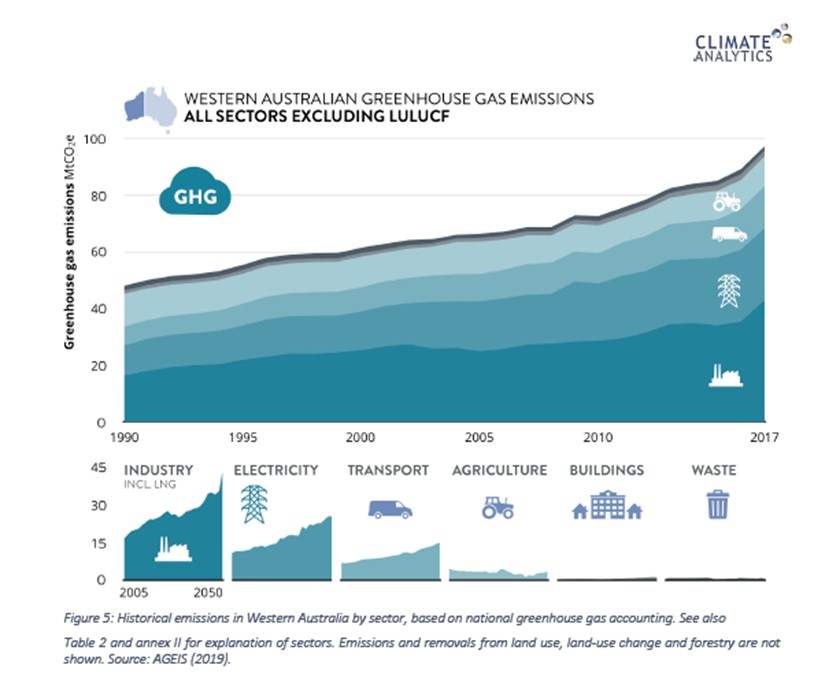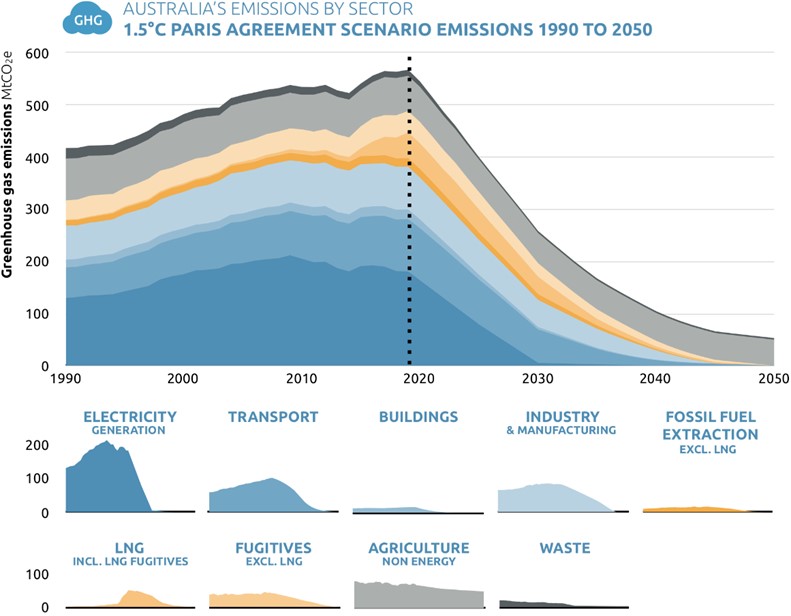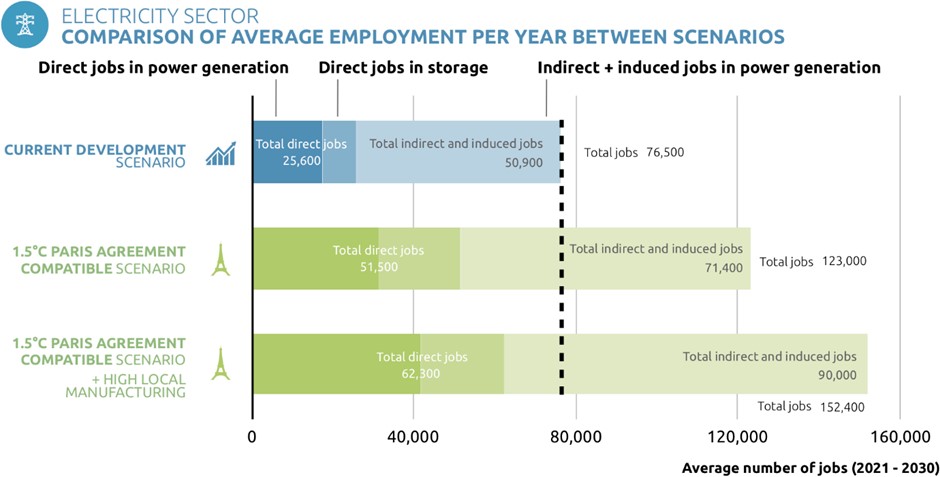2021-01-04
WA and the 1.5oC Paris Agreement Pathway
By Mark Brogan, Greens candidate for South Perth in the WA2021 election.
Thanks to Bill Hare, Ursula Fuentes Hutfilter, Brad Pettitt and Pam Mathews.
At a Community Conversation on November 29, held as a launch event for the Greens WA 2021 campaign in South Perth, the feasibility of a ‘safer’ 1.5oC degrees of global warming pathway was workshopped with the assistance of Bill Hare[1] and Ursula Fuentes Hutfilter[2], from the climate and energy policy think tank, Climate Analytics[3]. The 1.5oC degrees pathway was articulated as a long term temperature goal in Article 2 of the 2016 Paris Agreement (PA):
Holding the increase in the global average temperature to well below 2oC above pre-industrial levels and pursuing efforts to limit the temperature increase to 1.5oC above pre-industrial levels, recognizing that this would significantly reduce the risks and impacts of climate change.[4]
Chaired by Greens South Metro candidate, Brad Pettitt, the conversation probed what would be required to achieve the Article 2 goal, Western Australia’s fair share of the required emissions reductions and solutions for achieving them. Bill Hare led the conversation on climate with an explanation of the global effort (key global benchmarks) required for 1.5oC (Figure 1):

According to Climate Analytics (CA) analysis, CO2 emissions are required to reduce rapidly by 2030 to 45% below 2010 and net-zero must be achieved by 2050. The CA scenario envisages negative emissions of slightly > -10% out to the turn of the century ‒ ambitious, but not unachievable, with a strong green COVID 19 recovery stimulus, phase out of fossil fuels and aggressive emphasis on renewables and electrification.
In other work, CA finds Australia is shirking it’s global responsibility in emissions reduction with a weak Nationally Declared Commitment (NDC) of 26% to 28% on 2005 by 2030, no target for net zero and no Renewable Energy Target. Further, the Morrison Government’s gas led recovery and continuing support for the coal industry are expected to lock in high emissions for decades to come.
A major theme of the conversation was where WA fits into national and global narratives on the need for climate action. With large and expanding LNG and un-conventional gas sectors, WA’s GHG emissions have been rising steadily since the 1990s (Figure 2).

Hosting an exposed agricultural sector and fragile marine ecosystems, WA faces catastrophic risk from climate change. CA finds that in any PA compatible scenario LNG production must decline dramatically from 2030, if net-global zero emissions are to be achieved by 2050. With no emissions reduction target, no renewable energy target and a burgeoning conventional and unconventional gas industry, CA finds WA a major contributor to Australia’s GHG emissions problem.
Prescience is indeed a rare and precious thing. Within 24 hours of our conversation, the McGowan Government released its long awaited climate policy.[7] Hopes that this policy would outline a progressive, responsible agenda for emissions reduction and climate action were dashed when it was found that the policy contained no commitment to legislate an emissions reduction target and only an ‘aspirational’ goal of net zero emissions by 2050. Greens MLC Tim Clifford responded declaring that the policy was just another aspiration from a government that continued to fail to take real action on climate change:
Without addressing the drastically rising emissions from the LNG industry, without legislated interim emissions reduction targets and renewable energy targets, and without a carbon budget, this policy provides no real strategy on how this government will effectively reduce emissions.[8]
The Conservation Council of WA was also critical with its Director, Piers Verstegen, describing the policy and related announcements as a "collection of various disconnected policies and initiatives"[9]
Detail of the policy outlined six areas of decarbonization for WA's economy, including cleaner manufacturing; greener energy generation; carbon storage; less polluting vehicles; climate change resilient cities and regions; and government leadership.[10] Notwithstanding the problem with targets, important opportunities for de-carbonization had been correctly identified. But proposed actions are small scale. Review of all the Government’s investment announcements on renewables, battery storage, building climate resilience, carbon sequestration, green manufacturing and transport electrification, shows a government falling well short of what is required for at scale industry and economy transformation. With only $168 million in announcements so far, WA is a clear laggard in energy transition and de-carbonization. In November, NSW announced a $32 billion renewable energy plan[11]. Post covid commitments in other states range from $10 billion (SA) to $500 million (QLD). WA finds itself in fig leaf territory with grossly inadequate energy transition and de-carbonization ambition.
Dr Ursula Fuentes Hutfilter unpacked what is really required to put Australia on the path to a PA compatible climate future in the second part of the conversation on energy policy. Far from grim, Dr Hutfilter was upbeat in her assessment of the economic benefits to come from accelerated climate change action on an economy wide scale. Figure 3 describes an emissions reduction scenario for Australia inclusive of major industry sectors:

And yes, the capacity for emissions reduction in line with the PA goal is real (Figure 4)

In the Electricity Sector, which makes up around 30% of Australia’s GHG emissions, at scale transformation in line with the PA 1.5oC target will result in between 46,000 and 76,000 new direct and indirect jobs depending on the extent to which Australia embraces local renewables manufacturing opportunities. Far from costing jobs and retarding economic development, Dr Fuentes Hutfilter demonstrated that full policy embrace of the Paris Agreement Article 2 goal of restricting global warming to 1.5oC would have the opposite effect (Figure 5):

Western Australia could be expected to have a major share of the economic benefits to come from energy transition at scale, by virtue of its potential to host GW scale solar wind hybrid power plants fueled by abundant day time sun and wind from the Indian Ocean at night. Proximity to energy markets in South and South Eastern Asia is also a source of comparative advantage, creating opportunities for High Voltage Direct Current (HVDC) electricity export via under sea cables and the export of renewable hydrogen. The proposed Asian Renewable Energy Hub[15] in the Pilbara, epitomizes this vision of new opportunity. Abundant low cost renewable energy could also fuel a renaissance in local manufacturing based on new industries that are positioned to exploit lower energy costs and the re-positioning of existing industries in the value chain, again as a consequence of exploitation of lower energy costs. The range of possibility for economic transformation is canvassed by economist Ross Garnaut in his re-casting of Australia as a renewable energy superpower, in his recent book Super-Power: Australia’s Low Carbon Opportunity.[16]
The McGowan Government’s revolving door to fossil fuel companies runs as a counter narrative to this hopeful story of how Western Australia might shift to support the global effort inspired by Article 2 of the Paris Agreement. The time to act is now.
ENDNOTES
[1] Bill Hare is CEO and a Senior Scientist with Climate Analytics. For a short biography vide https://climateanalytics.org/about-us/team/bill-hare/
[2] Ursula Fuentes Hutfilter is a Senior Climate Policy Advisor with Climate Analytics. For a short biography vide https://climateanalytics.org/about-us/team/ursula-fuentes-hutfilter/
[3] Climate Analytics Climate Analytics (CA) was formed in 2008 to "bring cutting edge science and policy analysis to bear on one of the most pressing global problems of our time: human-induced climate change." CA undertakes research on the 1.5°C temperature limit in the Paris Agreement, and the risks and vulnerabilities that countries face. Vide https://climateanalytics.org/about-us/
[4] United Nations (2015). Paris Agreement. p.3 Retrieved from: https://unfccc.int/sites/default/files/english_paris_agreement.pdf
[5] Climate Analytics. (2019). A 1.5 Compatible Carbon Budget for Western Australia. Report. Retrieved from: https://climateanalytics.org/media/report-carbonbudgetforwa-climateanal…
[6] Ibid.
[7] Government of Western Australia. Department of Water and Environmental Regulation. (2020). Western Australian Climate Change Policy. Retrieved from https://www.wa.gov.au/service/environment/environment-information-servi…
[8] Hamish Hastie and Peter de Kruijff (2020). Top to bottom Tesla trip across WA a reality under new climate policy but zero emissions still just 'aspirational', WAtoday, 30 November, 2020. Retrieved from https://www.watoday.com.au/national/western-australia/top-to-bottom-tes…
[9] Ibid.
[10] Government of Western Australia. Department of Water and Environmental Regulation. (2020). Western Australian Climate Change Policy, p.7. Retrieved from https://www.wa.gov.au/service/environment/environment-information-servi…
[11] Australian Broadcasting Corporation. (2020). NSW Government's $32 billion renewable energy plan announced. Retrieved from https://www.abc.net.au/news/2020-11-09/nsw-government-32-billion-renewa…
[12] Climate Analytics. (2020). Climate Action Tracker 2020: Scaling up Climate Action - Australia Report. Retrieved from: https://climateanalytics.org/media/cat_2020-11-10_scalingup_australia_f…
[13] Ibid.
[14] Ibid.
[15] The Asian Renewable Energy Hub. n.d. Retrieved from https://asianrehub.com/
[16] Garnaut, R. (2019). Super-Power: Australia’s Low Carbon Opportunity. Carlton, Melbourne Australia. La Trobe University Press in Conjunction with Black Inc.
Header photo: Community Conversation on 29 November 2020, held as a launch event for the Greens WA 2021 campaign in South Perth
[Opinions expressed are those of the author and not official policy of Greens (WA)]
